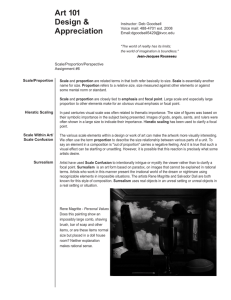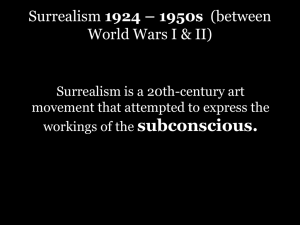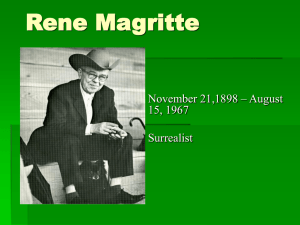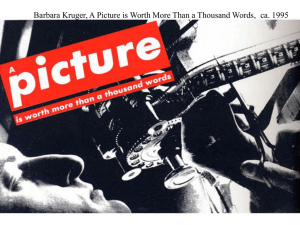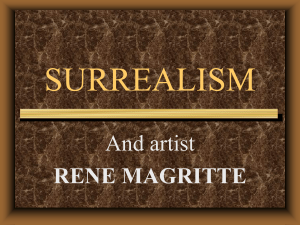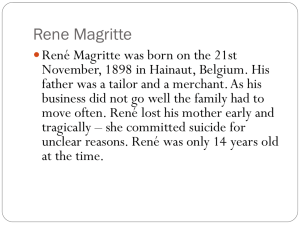211Lesson6Scale_F09
advertisement
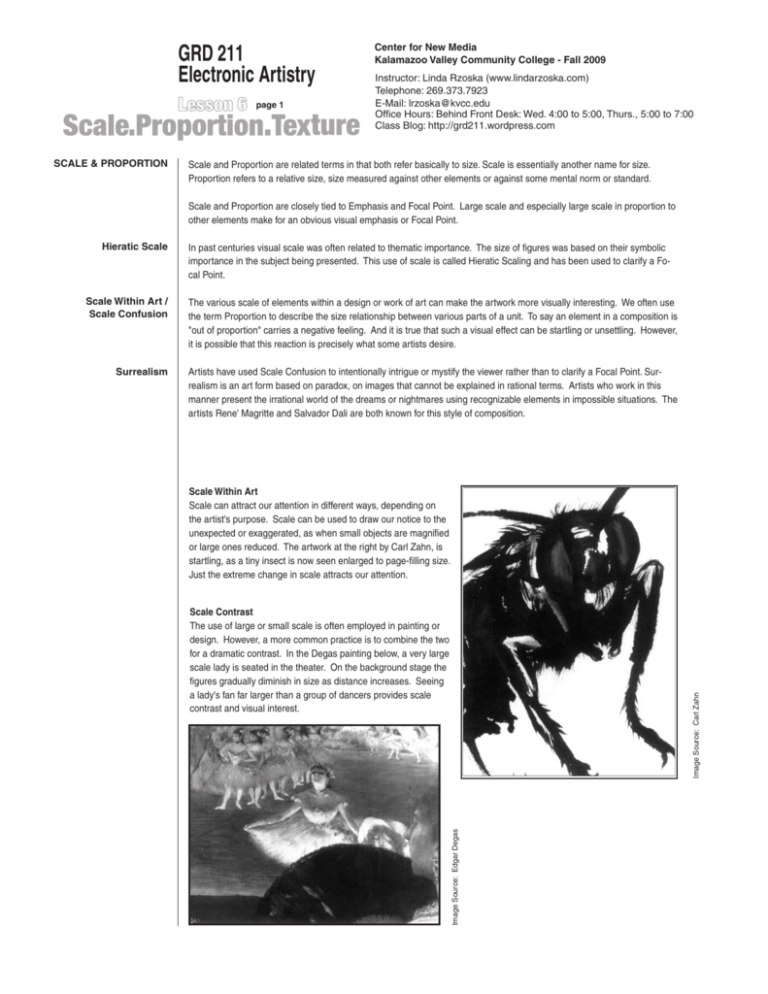
GRD 211 Electronic Artistry page 1 SCALE & PROPORTION Center for New Media Kalamazoo Valley Community College - Fall 2009 Instructor: Linda Rzoska (www.lindarzoska.com) Telephone: 269.373.7923 E-Mail: lrzoska@kvcc.edu Office Hours: Behind Front Desk: Wed. 4:00 to 5:00, Thurs., 5:00 to 7:00 Class Blog: http://grd211.wordpress.com Scale and Proportion are related terms in that both refer basically to size. Scale is essentially another name for size. Proportion refers to a relative size, size measured against other elements or against some mental norm or standard. Scale and Proportion are closely tied to Emphasis and Focal Point. Large scale and especially large scale in proportion to other elements make for an obvious visual emphasis or Focal Point. Hieratic Scale In past centuries visual scale was often related to thematic importance. The size of figures was based on their symbolic importance in the subject being presented. This use of scale is called Hieratic Scaling and has been used to clarify a Focal Point. Scale Within Art / Scale Confusion The various scale of elements within a design or work of art can make the artwork more visually interesting. We often use the term Proportion to describe the size relationship between various parts of a unit. To say an element in a composition is "out of proportion" carries a negative feeling. And it is true that such a visual effect can be startling or unsettling. However, it is possible that this reaction is precisely what some artists desire. Surrealism Artists have used Scale Confusion to intentionally intrigue or mystify the viewer rather than to clarify a Focal Point. Surrealism is an art form based on paradox, on images that cannot be explained in rational terms. Artists who work in this manner present the irrational world of the dreams or nightmares using recognizable elements in impossible situations. The artists Rene' Magritte and Salvador Dali are both known for this style of composition. Scale Within Art Scale can attract our attention in different ways, depending on the artist's purpose. Scale can be used to draw our notice to the unexpected or exaggerated, as when small objects are magnified or large ones reduced. The artwork at the right by Carl Zahn, is startling, as a tiny insect is now seen enlarged to page-filling size. Just the extreme change in scale attracts our attention. Image Source: Edgar Degas Image Source: Carl Zahn Scale Contrast The use of large or small scale is often employed in painting or design. However, a more common practice is to combine the two for a dramatic contrast. In the Degas painting below, a very large scale lady is seated in the theater. On the background stage the figures gradually diminish in size as distance increases. Seeing a lady's fan far larger than a group of dancers provides scale contrast and visual interest. GRD 211 Electronic Artistry page 2 Image Source: Rene' Magritte & Eugeniucz Get-Ataniewicz Scale Confusion The deliberate changing of natural scale is not unusual in painting and design. In religious paintings many artists have arbitrarily increased the size of Christ or the Virgin Mary figure to emphasis philosophic and religious importance. Some artists, however, use scale changes intentionally to intrigue or mystify us as well as to clarify the focal point. Rene' Magritte, left, and Eugeniusz GetStaniewicz, above, use scale confusion in these Surrealist compositions. do these exercises to perfect your skills and broaden your knowledge base Project Procedure Exercise GRD 211 Class Blog Design Exercises Textbook Pages: 66 to 71 Research Carl Zahn Web / Library / Book Store / Gallery Research Rene' Magritte Web / Library / Book Store / Gallery Research Salvador Dali Web / Library / Book Store / Gallery Research Surrealism Web / Library / Book Store / Gallery
